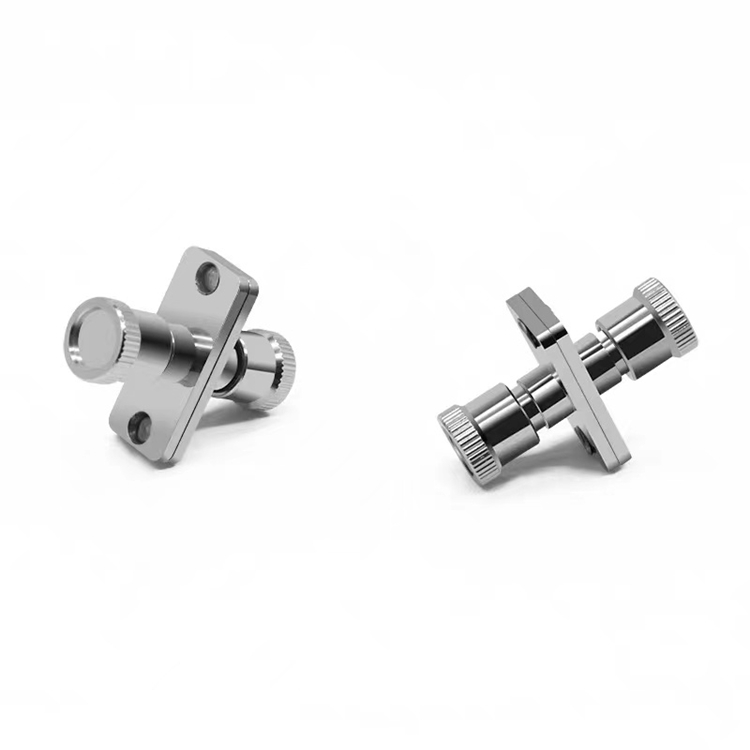



The SMA905 adapter is a right-angle (90-degree) RF adapter that belongs to the SMA (SubMiniature version A) connector family and is designed for vertical connection of coaxial cables or devices in space-constrained scenarios. Its core function is to convert signal direction to avoid signal loss or mechanical damage caused by cable bending.
Product Name: SMA905 Fiber Adapter (POF/SMA905 Compatible)
Product Interface: SMA905 to SMA905 (Plastic/Multimode Fiber)
Key Features:
Low Insertion Loss (<0.5dB) for POF Adapter
High-Temperature Resistance (-40°C~+85°C)
Zinc Alloy Housing, Anti-Corrosion

Core Functions
Signal switching: Transmit high-frequency signals (such as microwaves and millimeter waves) in radio frequency (RF) systems.
Spaceoptimization: Reduce the size of the device and simplify the wiring complexity through right-angle design.
Impedance matching: Standard 50 Ω impedance, compatible with mainstream RF equipment (such as communication base stations and test instruments)
Typical Application Areas
Communication systems: 5G base stations, satellite antennas, WiFi routers.
Test and measurement: right-angle interface extensions for spectrum analyzers and network analyzers.
Aerospace: Compact connection solutions for airborne radars and navigation equipment.
Medical equipment: Precision signal transmission for MRI and radiofrequency therapy devices
Product Description
Frequency range: Conventional adapters support DC~18 GHz (high-frequency performance depends on materials and processes).
Durability: High-quality products can withstand more than 500 plug-in and unplug cycles.
The core value of the SMA 905 adapter is to solve the space limitation problem through the right-angle structure while maintaining efficient transmission of high-frequency signals. It is an indispensable precision component in RF engineering and is widely used in communications, testing, military and other fields. When choosing, focus on frequency requirements, interface type and manufacturing process to ensure stable system performance.
Applications:
Plastic Optical Fiber (POF) Systems (Automotive, Industrial)
Medical/Sensor Devices (Endoscopy, Spectroscopy)
Multimode Fiber Patch Panels